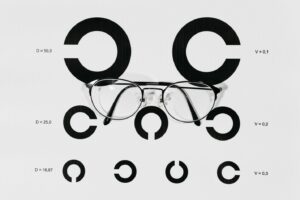
For those struggling with nearsightedness, farsightedness, or astigmatism, LASIK has emerged as a reliable vision correction option. By reshaping the cornea with precision, this laser-assisted procedure reduces dependence on glasses or contact lenses. Patients experience rapid improvement, with long-term benefits that often extend for decades. The ability to wake up each morning with clear vision enhances daily life in ways that many patients describe as transformative, and the full story is there to read for those curious about its lasting impact.
The LASIK Procedure: What to Expect
LASIK is an outpatient surgery that typically takes less than 30 minutes. Prior to the procedure, a comprehensive eye exam determines whether the patient is a suitable candidate. The process involves creating a thin corneal flap, reshaping the underlying tissue with a laser, and repositioning the flap to heal naturally. The precision of modern LASIK technology allows for highly customized corrections tailored to each individual’s vision needs.
Most patients notice improved vision within hours, with full stabilization occurring over several months. The procedure itself is painless due to numbing drops, though mild discomfort may follow as the eyes heal. Some individuals report a slight pressure sensation during the flap creation, but this is temporary. The quick nature of the surgery, combined with minimal downtime, makes LASIK a preferred option for those seeking effective and lasting vision correction.
Recovery Timeline and Post-Operative Care
The First 24 Hours
Immediately after LASIK, vision may appear foggy or hazy. Patients are required to rest their eyes and use prescribed eye drops to prevent infection and inflammation. Sensitivity to light, mild irritation, and temporary dryness are common but improve quickly. Protective shields are worn during sleep to prevent accidental eye rubbing.
Resting with closed eyes for the first few hours post-surgery can significantly ease discomfort. Some patients find that keeping artificial tears chilled in the refrigerator provides additional relief. Although vision begins improving right away, it is normal for sharpness to fluctuate during this early healing phase.
The First Week
Vision sharpens significantly within the first few days, allowing most patients to resume normal activities. However, exposure to dust, water, and strenuous exercise should be avoided. Eye drops remain essential for lubrication and healing. Some individuals experience halos around lights at night, but this typically diminishes over time.
Reading, computer work, and screen time should be limited during the first few days to avoid excessive eye strain. Patients should also avoid environments with smoke or strong odors, as these can contribute to irritation. Outdoor activities require UV-protective sunglasses to shield the healing eyes from excessive sunlight exposure.
Long-Term Healing
While substantial vision improvement occurs within weeks, the eyes continue adjusting for several months. Follow-up appointments ensure proper healing. Most patients achieve stable vision between three to six months post-surgery. It is not uncommon for minor fluctuations in clarity to occur during this period as the eyes fully adapt to their new shape.
The Lasting Benefits of LASIK
LASIK is designed to offer permanent vision correction. The majority of patients achieve 20/20 vision or better, eliminating the need for corrective lenses in most situations. While natural aging processes such as presbyopia may affect vision later in life, the structural improvements from LASIK remain intact.
Reduced Dependence on Glasses and Contacts
One of the most significant advantages of LASIK is freedom from daily eyewear. Many patients enjoy outdoor activities, sports, and travel without the inconvenience of glasses or contacts. This newfound independence extends to activities such as swimming, where contact lenses would otherwise pose risks of infection or discomfort.
Cost Savings Over Time
Although LASIK involves an upfront investment, long-term savings on glasses, contact lenses, and eye care supplies add up over the years. Many patients find the procedure financially beneficial in the long run. The expenses associated with routine eye exams, prescription updates, and replacement lenses can accumulate significantly over a lifetime.
Enhanced Quality of Life
Sharper vision improves confidence, convenience, and overall quality of life. Whether driving at night, reading fine print, or engaging in physical activities, clearer vision enhances daily experiences. Many patients also report feeling more confident in professional and social settings due to the elimination of eyewear dependency.
Potential Considerations and Candidacy
While LASIK is highly effective, not everyone qualifies for the procedure. Factors such as corneal thickness, eye health, and medical history determine eligibility. Individuals with severe dry eye, certain autoimmune conditions, or unstable prescriptions may require alternative solutions. A thorough consultation with an ophthalmologist is necessary to assess suitability.
Side Effects and Risks
Although complications are rare, some patients may experience dry eyes, temporary glare, or night vision difficulties. These effects typically improve with time and proper post-operative care. Surgeons discuss realistic expectations to help patients make informed decisions. Regular use of lubricating drops and adherence to follow-up visits aid in a smooth recovery process.
In rare cases where a patient does not achieve the desired visual outcome, an enhancement procedure may be considered after sufficient healing time. While LASIK has a high success rate, patient education and adherence to post-operative guidelines are key factors in achieving optimal results.
LASIK: A Modern Solution for Vision Correction
Advancements in laser technology have made LASIK safer and more precise than ever. Millions of individuals have benefited from this procedure, achieving lasting vision improvement. For those considering LASIK, a thorough consultation with an experienced ophthalmologist can determine the best course of action.
Clearer vision is within reach, and LASIK continues to transform lives by providing long-term freedom from corrective eyewear. Patients who invest in the procedure often describe it as one of the most rewarding decisions they have made for their personal well-being and daily comfort.

